Body contouring is becoming increasingly popular as a way to enhance your appearance and boost self-confidence by addressing stubborn fat, loose skin, and body proportions. Whether you’re considering non-invasive treatments like CoolSculpting or more extensive procedures like liposuction, your first consultation is a crucial step. This article will guide you through what to expect and how to prepare for your initial body contouring consultation.
Preparing for Your Consultation
Research Procedures:
Before your consultation, familiarize yourself with different body contouring options such as liposuction, tummy tucks, body lifts, and non-invasive treatments like CoolSculpting and Emsculpt. Understanding these procedures will help you have an informed discussion with your practitioner.
Set Clear Goals:
Reflect on what you w:=ant to achieve. Are you looking to remove excess fat, tighten sagging skin, or improve your body’s proportions? Clear goals will help your practitioner recommend the most suitable treatments. A study published in the Aesthetic Surgery Journal found that patients with clear, realistic goals are more satisfied with their outcomes.
Prepare Questions:
Write down any questions or concerns about body contouring. This may include inquiries about the procedure, recovery time, potential risks, and expected results.
Gather Medical Information:
Your practitioner will need details about your medical history, including pre-existing conditions, allergies, and medications. Having this information ready will save time and ensure a comprehensive assessment of your health.
During the Consultation
Body and Goals Assessment:
The consultation will start with an examination of the areas you wish to target. The practitioner will assess skin elasticity, fat distribution, and muscle tone. This assessment helps determine the best procedures for your needs. A study in Plastic and Reconstructive Surgery emphasizes the importance of a thorough physical assessment to tailor the best treatment plan for each individual.
Discussion of Treatment Options:
Your practitioner will discuss various treatments based on your assessment. They will explain how each procedure works, the expected results, potential risks, recovery process, and costs. This is your chance to ask questions and voice any concerns.
For example, CoolSculpting involves freezing fat cells, which are then naturally eliminated by the body. It’s non-invasive and has minimal downtime. On the other hand, liposuction is more invasive but can remove larger amounts of fat and provide more immediate results.
Deciding on a Treatment Plan
After your body contouring consultation, take the time to thoughtfully consider the treatment options presented to you. Here are some key points to help you make an informed decision:
Evaluate Treatment Alignment with Goals:
Reflect on how each recommended procedure aligns with your personal goals. For example, if your primary goal is to remove stubborn fat deposits, non-invasive options like CoolSculpting might be ideal due to their targeted approach. On the other hand, if you aim to achieve significant skin tightening, procedures like Ultherapy may be more suitable.
Budget Considerations:
Assess the cost of each procedure. Some treatments might require multiple sessions, which can impact your overall budget. Compare the cost-effectiveness of non-invasive treatments versus surgical options. Non-invasive treatments often have lower upfront costs but may require more sessions for optimal results.
Lifestyle Compatibility:
Think about how each treatment fits into your lifestyle. Non-invasive procedures typically have minimal downtime, allowing you to return to your daily activities almost immediately. In contrast, surgical options might require a longer recovery period. For example, liposuction involves a recovery period of several weeks, which might not be feasible for those with demanding schedules.
Further Questions and Follow-Ups:
If you have any lingering questions or concerns, don’t hesitate to reach out to your practitioner. They can provide additional information or clarification to help you make a confident decision. It’s important to fully understand the benefits, risks, and recovery process associated with each procedure.
Scheduling Your Procedure
Once you’ve decided on a treatment plan, the next step is to schedule your procedure. Here’s what you can expect during this phase:
Choosing a Suitable Date:
Work with your practitioner to find a date that fits your schedule. Consider any upcoming commitments that might interfere with your recovery time. Ensure you have adequate time to rest and heal, especially if the procedure involves significant downtime.
Pre-Operative Instructions:
Your practitioner will provide detailed pre-operative instructions to prepare you for the procedure. These may include dietary restrictions, avoiding certain medications, and guidelines for skincare. Following these instructions is crucial to minimize the risk of complications and ensure optimal results.
Post-Operative Care and Recovery:
After the procedure, you will receive post-operative care instructions. These might include information on wound care, managing discomfort, and activity restrictions. For example, you may be advised to avoid strenuous activities for a few weeks to facilitate healing. Proper adherence to these instructions is essential for a smooth recovery and achieving the best possible outcome.
Arranging Support:
If your procedure requires anesthesia or involves a significant recovery period, arrange for someone to drive you home and stay with you for the first 24 hours. Having a support system can help you manage the initial post-procedure phase more comfortably.
Follow-Up Appointments:
Schedule follow-up appointments with your practitioner to monitor your progress and address any concerns. These visits are important for ensuring that your recovery is on track and for making any necessary adjustments to your post-operative care plan.
By carefully considering your options and following your practitioner’s pre- and post-operative instructions, you can enhance your body contouring experience and achieve the desired results. Book a consultation with Nuveau today to create a personalized treatment plan.
